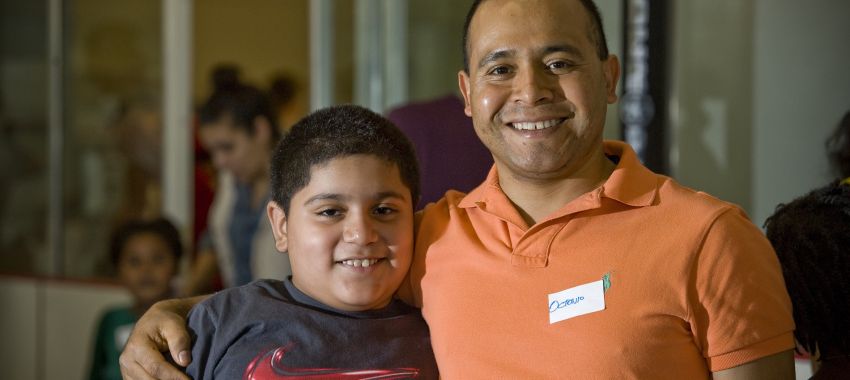
Boston Students in Poverty on the Rise: How Mentors Can Help
In Boston Public Schools, more than three out of four students live near or below the poverty line. This statistic reflects a growing problem not just in Boston but in the United States as a whole—the percentage of lower income students in public schools is rising. With that comes a growing concern for the well-being of children in America. Opening discussions about public policy and federal aid, the increase in youth poverty asks an important question BBBSMB also seeks to answer: what can we do to ensure the best future for children in need?
In order to work towards a solution, it is important to first fully understand the problem. Here are some key takeaways from the New York Times article on poverty in public schools:
- 51% of all students attending public schools are now eligible for free or reduced price lunches
- Students from low-income families often arrive at school with more medical, behavioral, and academic needs
- Students from high-income families have the benefit of music lessons, sports leagues, tutoring, or cultural trips, and schools are left to fill these gaps for low-income families
- Therefore, public schools need as many resources as possible in order to address the needs not met by low-income families
Similar to these statistics, the Boston Globe reported last year that poverty in Mass. has been slowly climbing for the past five years. In many ways, Boston Public Schools are aware of these statistics and working to ensure the best educational experience for all children. Over time, special departments have been developed in the school system to focus on different aspects of poverty including homelessness and family engagement. Mary William, the Homeless Ed. Resource Network Specialist at BPS, explains that her work engages in several initiatives, though many are taken on a case-by-case basis.
Voices from both the New York Times and Boston Public Schools echo the need for several resources in order to support and prepare every student for “college, careers, and life.” Mary spoke about the many resources available through her department:
“Through Homeless Education Network (HERN), we ensure that students who are experiencing homelessness can continue to attend school during that transition period in their lives. Transportation is the most requested and frequently used resource. On a yearly basis, we service over 4000 students. Private out of district transportation is provided to approximately 400 students that are costing the district over $3 million.
These resources available though the Boston Public Schools highlight the importance of actively assisting children in need during this time in their lives. In fact, according to Seedling’s Mentor Program, the two most important factors that can change the outcome of children are education and relationships. As a program designed to provide children with adequate role models, Big Brothers Big Sisters hopes to provide the support of a trusting relationship that children around the country are needing now more than ever.
Although mentoring a low-income child may appear challenging, there are many ways mentors can positively influence the lives of their mentees and help them grow into successful, smart, and independent individuals. With Boston poverty levels increasing, we find it is crucial to offer our mentors tips for mentoring a child in poverty.
Here are 7 ways you can guide these children in need:
1. Introduce new opportunities
Showing a child all of the possibilities life holds allows children to realize their potential. Talking about different educational paths and career opportunities can help open a child’s eyes to a passion he or she might not have known otherwise.
2. Offer empathy, not pity
A relationship thrives when the mentor truly understands where the mentee is coming from. Expressing that understanding and being there for the child will help build trust and show the mentee that he or she is not alone.
3. Be consistent
Because poverty is often marked with inconsistency and confusion, being a figure who is always there will reassure children of their support and worth.
4. Express hope and instill a positive vision of the future
Being optimistic not only puts a smile on your mentee’s face, it also provides him or her with confidence and a support system that is crucial for success.
5. Set realistic goals
Setting small goals and achieving them instills a sense of worth and purpose into a child. By reaching the smaller goals, children will see how they are capable of reaching larger ones.
6. Stimulate the brain and body
Getting active with sports and challenging one another with educational games increases a child’s attention skills, motivation, and overall performance in school.
7. Keep in touch, even if it doesn’t seem to be working
Battling shyness and reservations can be difficult, but sometimes it takes a few conversations or meetings until a child opens up. Having faith in the relationship, being patient, and putting in the extra effort at the beginning will make a huge difference in the long run.
By working with these tips, mentors allow children to build resilience, equipping them to face any challenges that may come their way. How do YOU think we can best impact our children’s’ lives? Share your thoughts with us, or learn more about becoming a Big.
Children s safety is our number one priority; throughout the duration of the match, not just the beginning!
